Sengoku Devlog 4
Castle tileset (Diego Avena):
Last week I started work on the castle tileset, which we plan on using for the first part of our game. The designs for the tileset are based on Japanese castles that existed during this time, but are not meant to represent any of these castles in particular. One major challenge so far is the scale of the tileset. When you think about it, the tileset is actually not that big because tiles with the same design are reused, but I had to lay these tiles out in a way that reassembles a castle in order to help me visualize what tiles are needed and if the tiles connect with each other as intended. For the final tileset, I might just make a separate file that contains only the unique designs to avoid including repeated designs, which can needlessly waste memory once imported into Unity. The problem with this though is that it may make it hard to see how the tiles can be put together to make our castle level, but I think if I include an image of the tileset put into a castle like in the images below, it will be possible, but time consuming in terms of level design; however, I think it is wiser to use memory more efficiently than cutting dev time. I might also use this same approach for the machiya tileset.
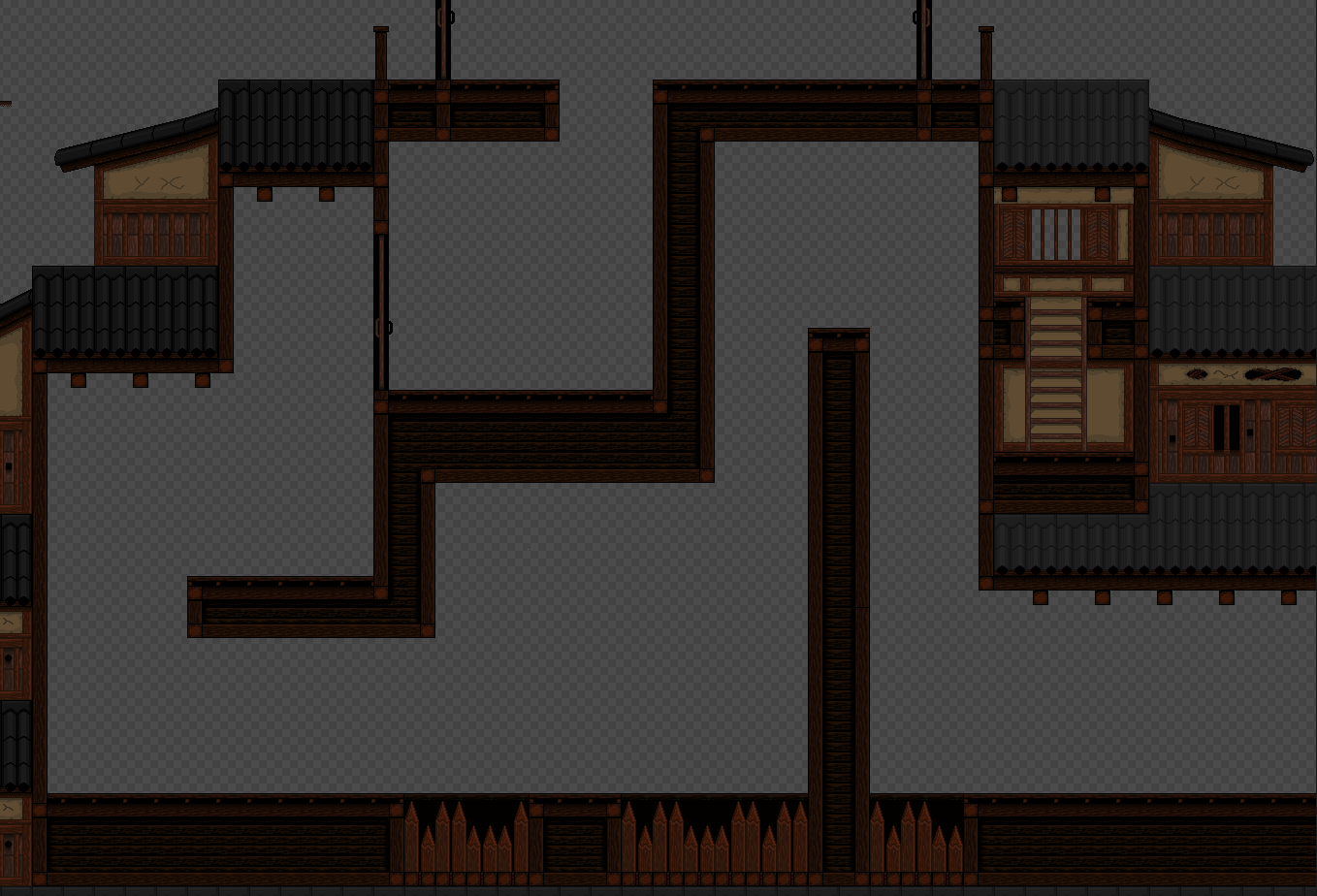
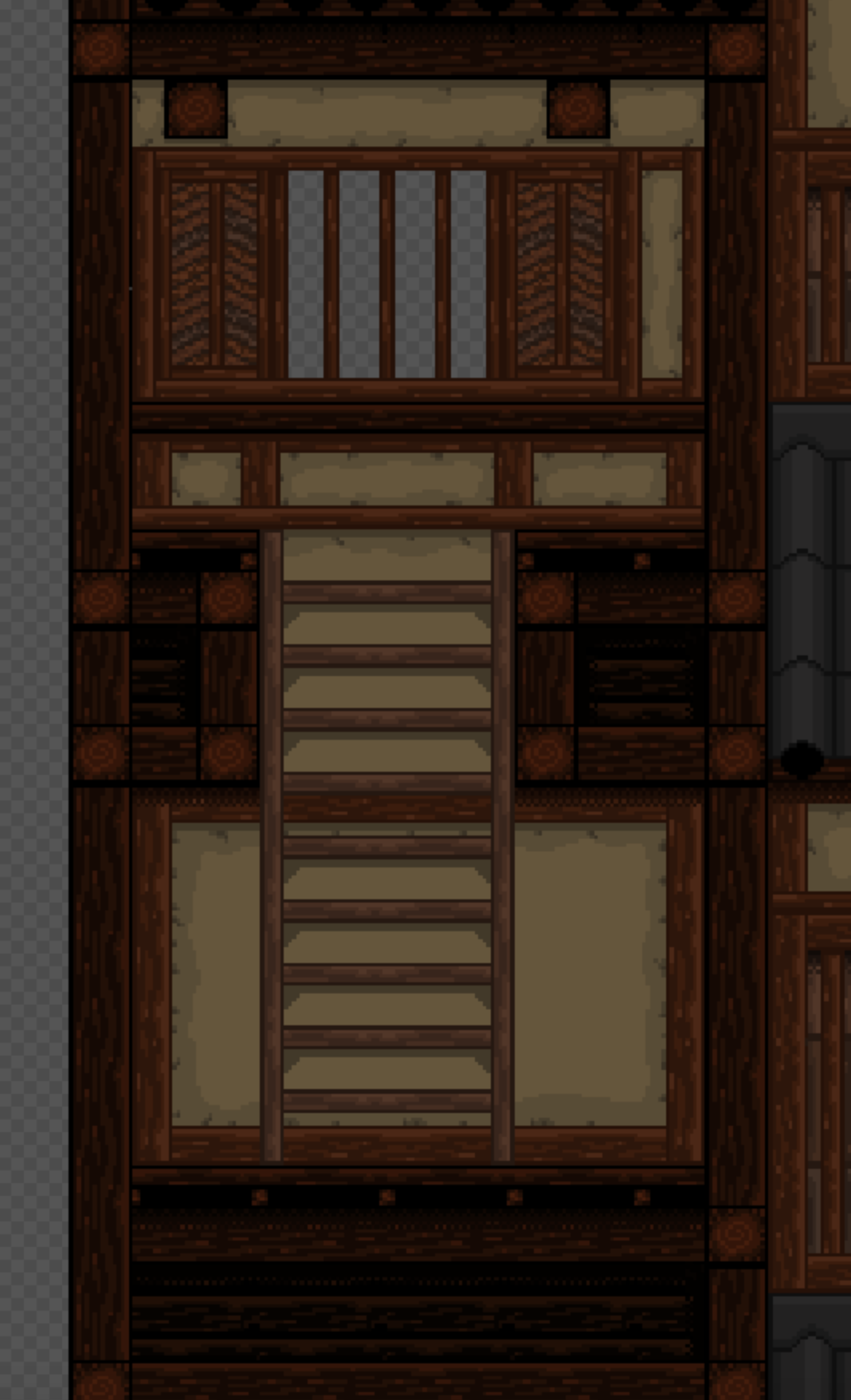
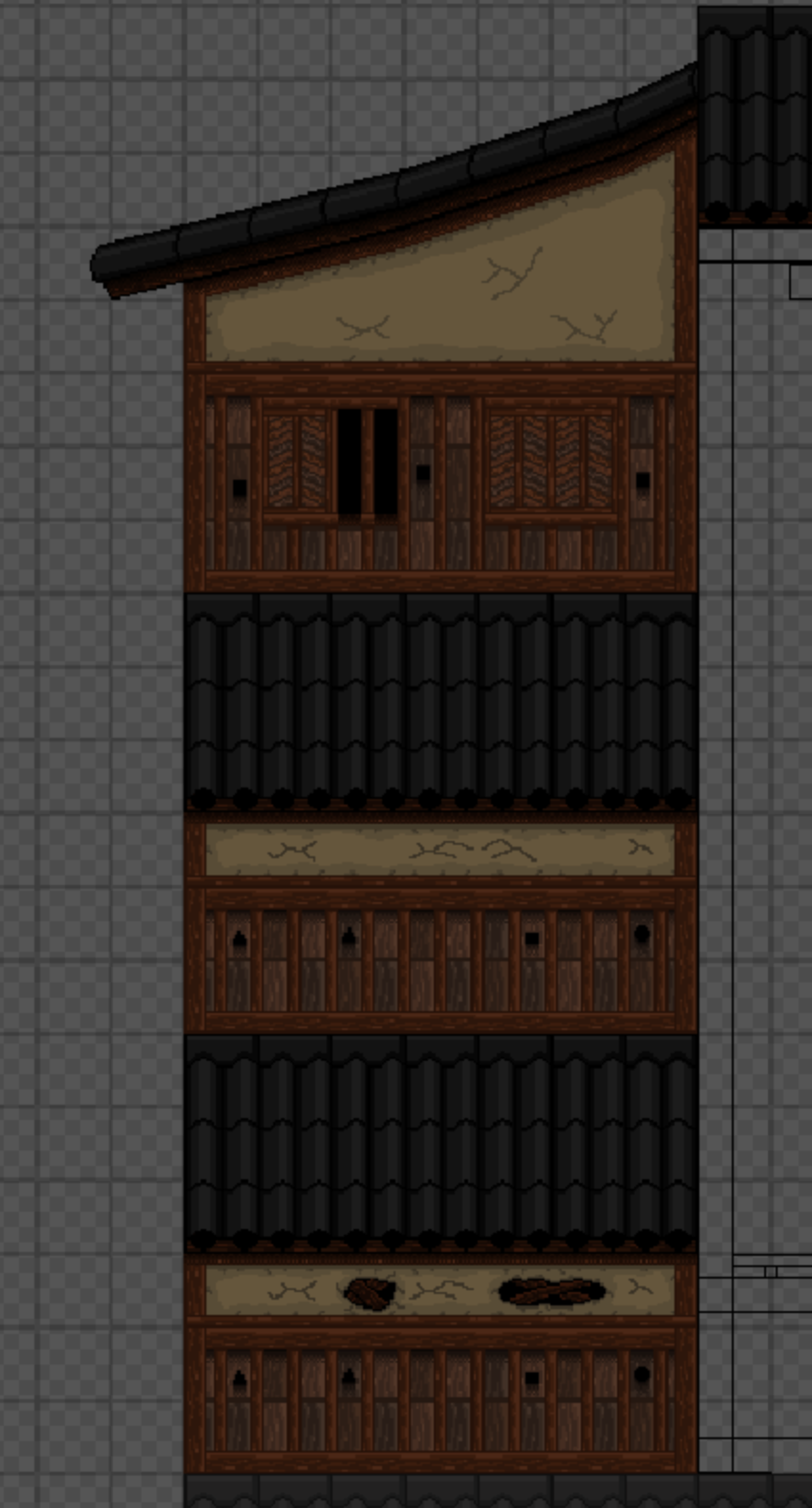
So far, the most time consuming part has been in making the curved roof parts. These roofs (shown in the images below) were extremely tedious to make, and took me about 3 days to do. The coloring process was extremely difficult to do, but I think they add a nice bit of variation to the tileset. Nonetheless, due to their sharp curvature, these roof parts are only meant to be used for looks, and will not be used in areas that the player can platform in. This is why their color is darker than the flat roof pieces, so that this difference can be displayed visually.
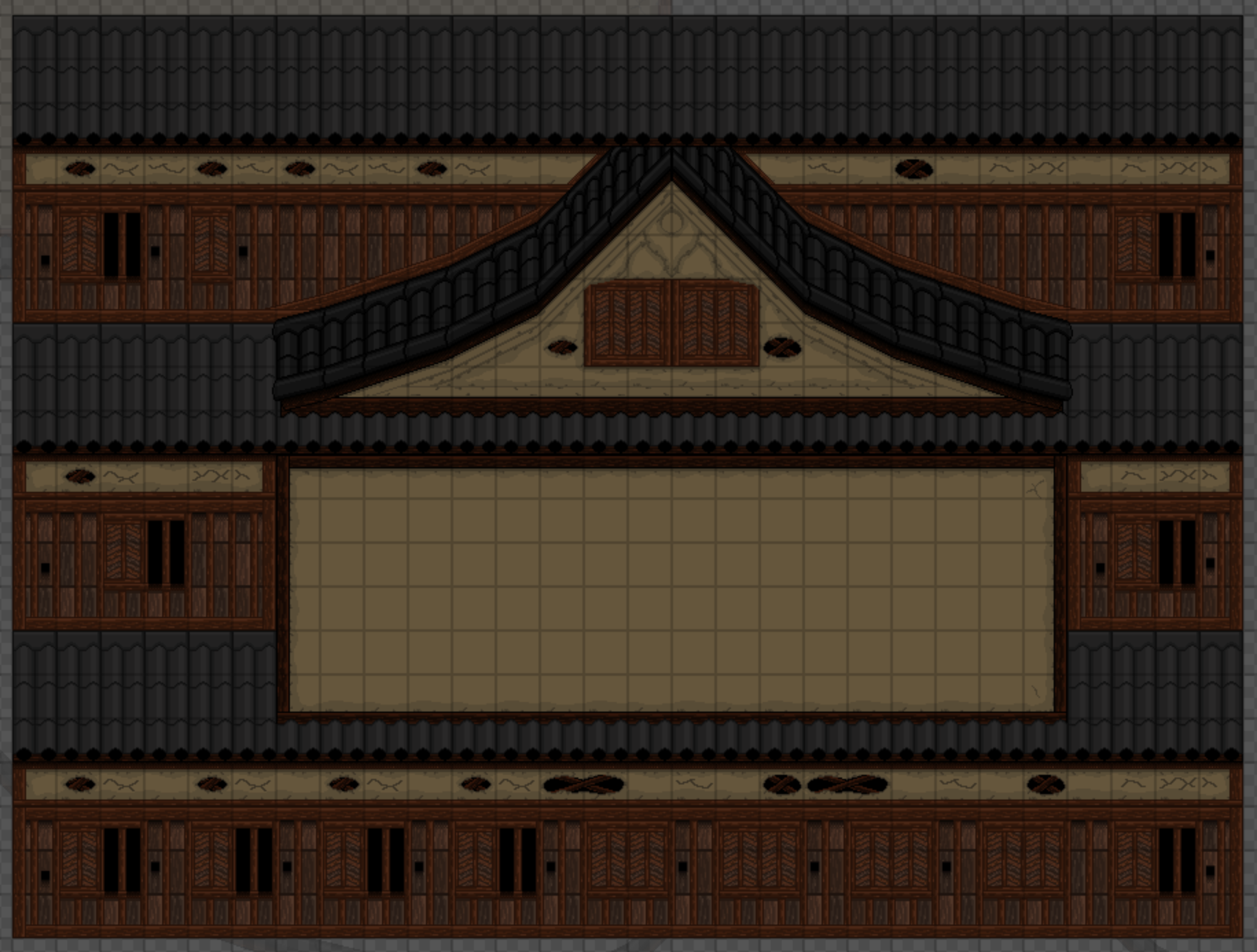
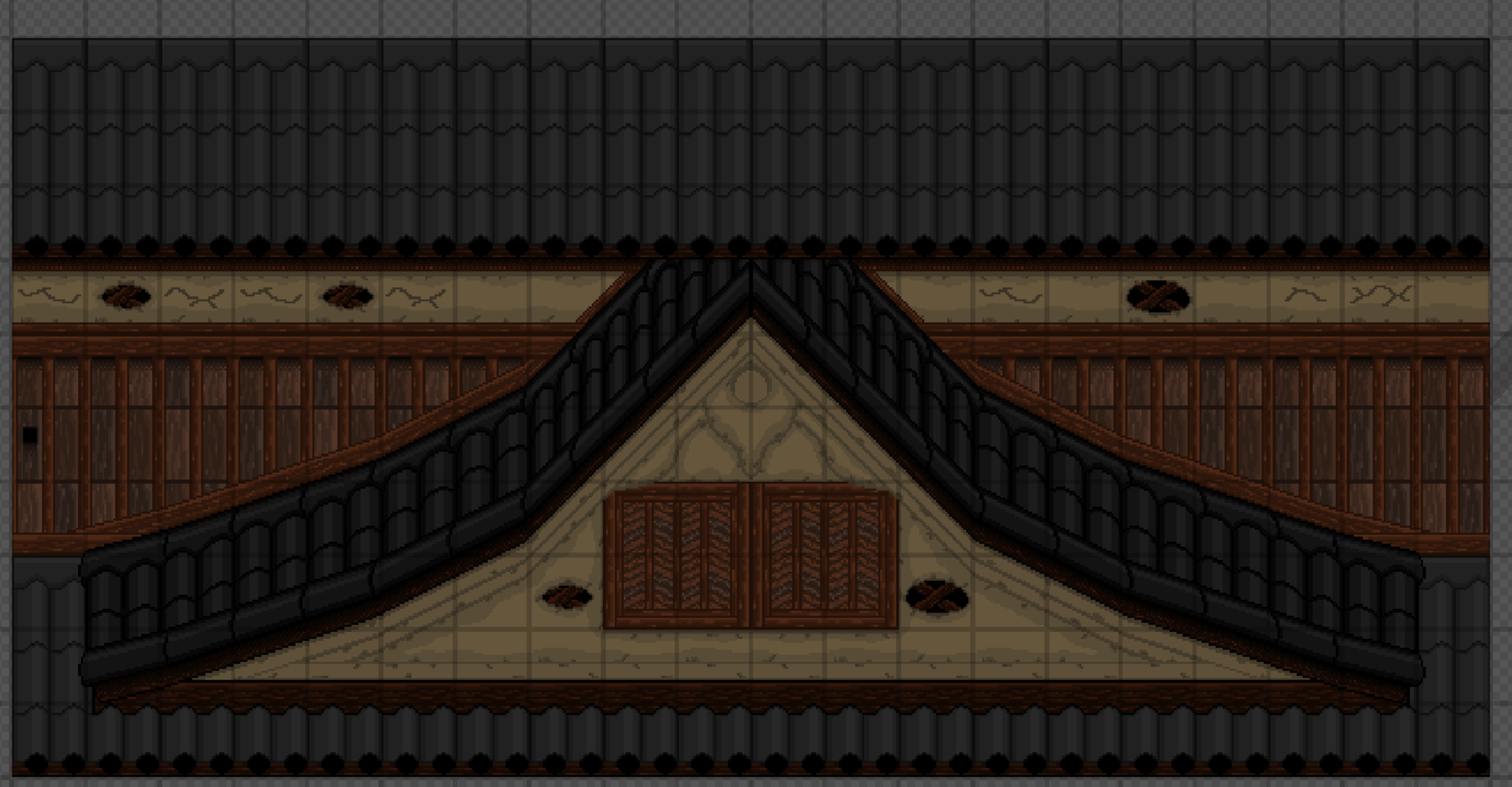
The entire process has also been one of trial and error, as seen in the image below. It took me about 4 different attempts (shown in the image below) to finally get a design I was proud of for the interior platforms. This trial and error process can also be very time consuming.
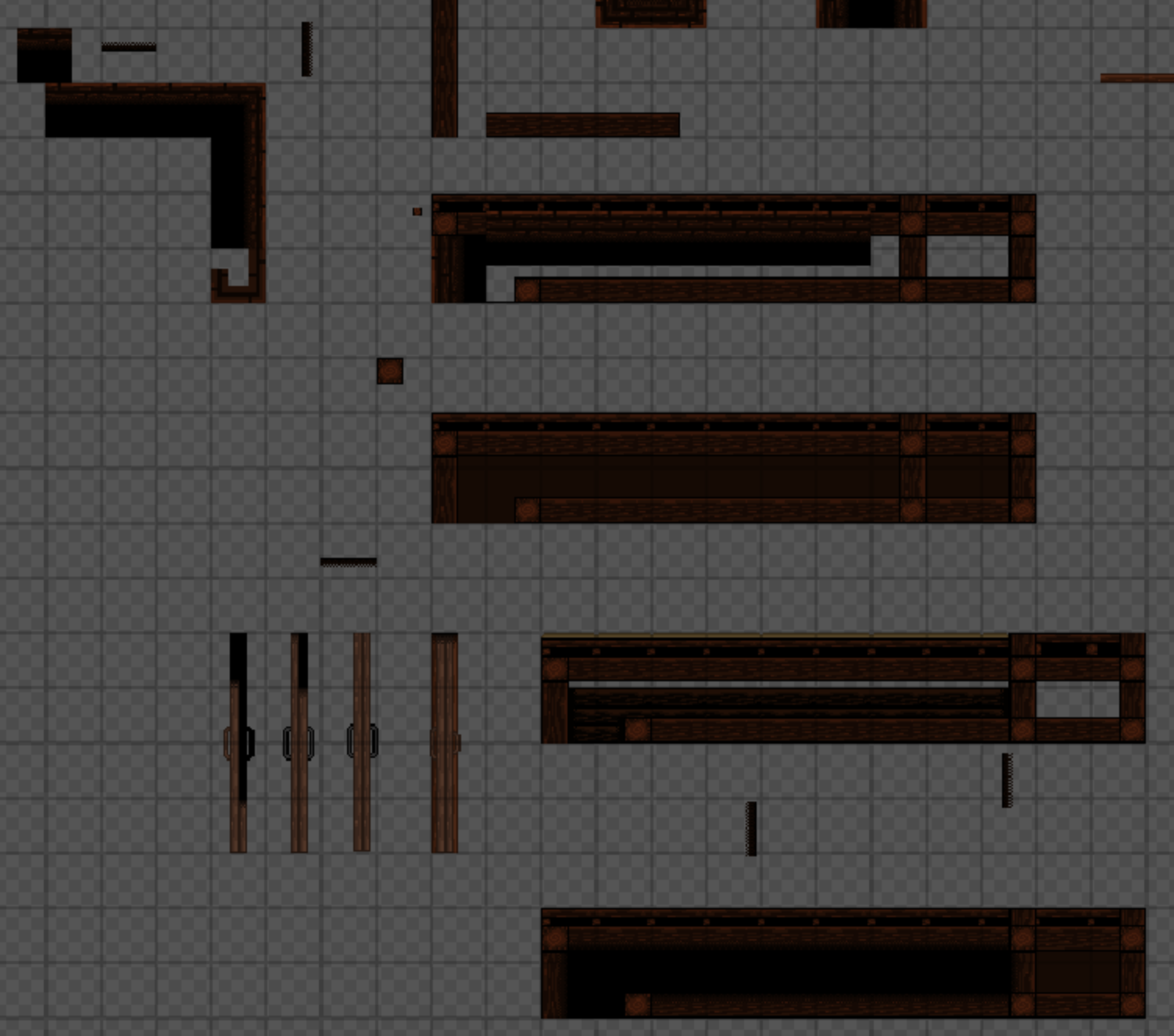
One of our bosses is also going to be in a castle like this, and we plan on placing it inside one of the castle towers; however, we need to make sure that this tower is wide enough and tall enough to allow for a boss fight; below is an image of how that room/arena will look like. There are also 2 sliding doors on the side that will be open to allow the player to enter, and close right when the bossfight starts.
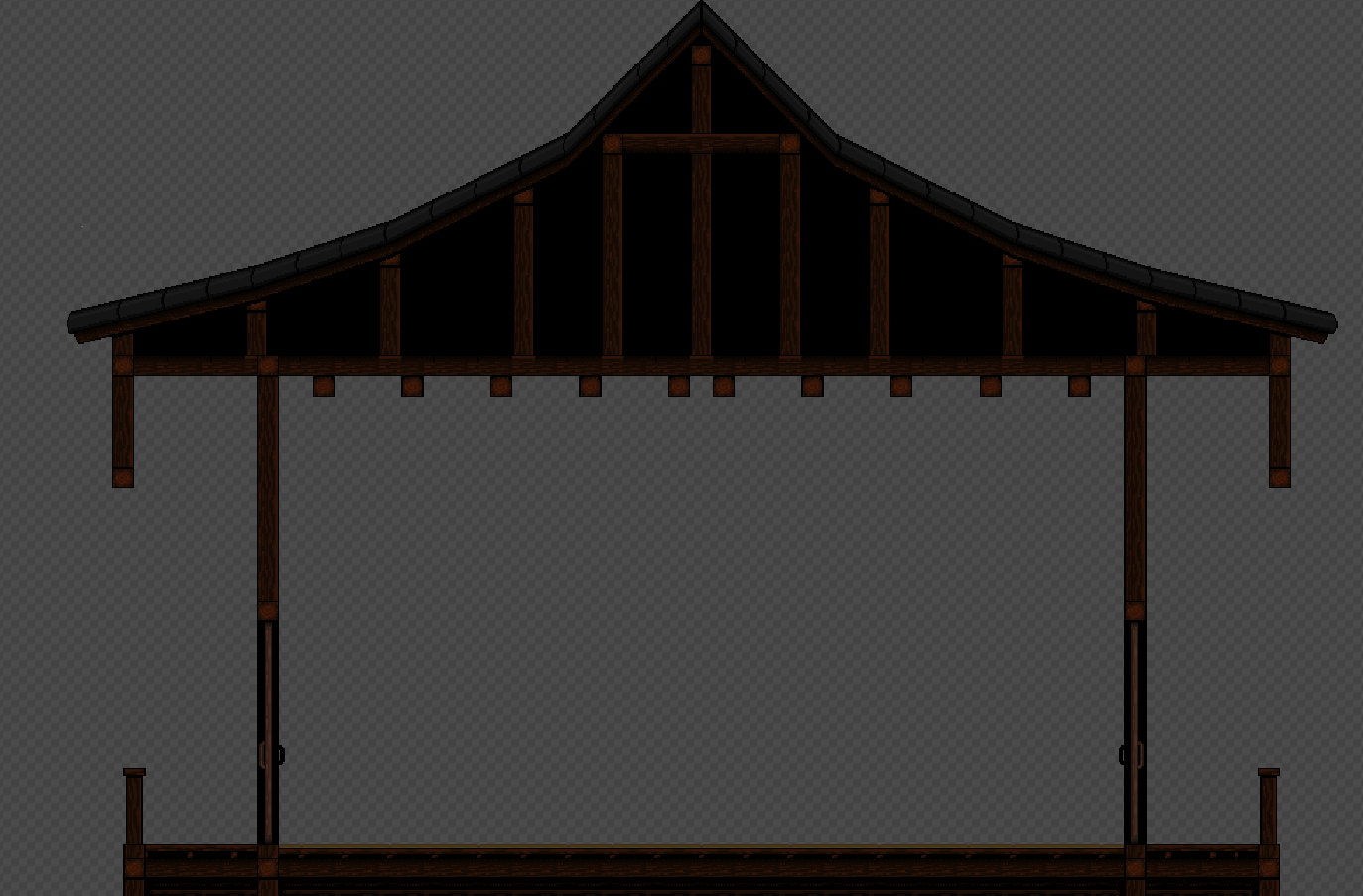
A lot more work is still needed in the background tiles, but I think things are off to a great start for this tileset. I also still need to further refine the machiya tileset.
Spear Samurai Animation (Jon):
This week I worked on the animation cycles for a new Spear Ashigaru enemy type. He’s a more advanced version of the basic Spear Soldier, combining range, speed, and evasive maneuverability. He will patrol a given area and then aggro a player if they come within range, following them and attacking with a low strike and a high strike. After completing both attacks, the enemy will spin away backwards to evade the player before moving into position and attacking again. The Spear Samurai additionally has a ranged spear throw which he will use if the player tries to flee his zone.
The main challenge with the Spear Samurai was to get his cloak to move realistically. The original spear soldier had a grass cloak, so we decided to give one to the Spear Ashigaru as well to distinguish him from the Archer Soldier and the Rifle Soldier. Additionally, the balance of the footwork was a bit difficult to figure out. Like the walk cycle, the evasive spin had to be animated in place and then moved in Unity with code, to allow for the game object to retain a given hitbox.

